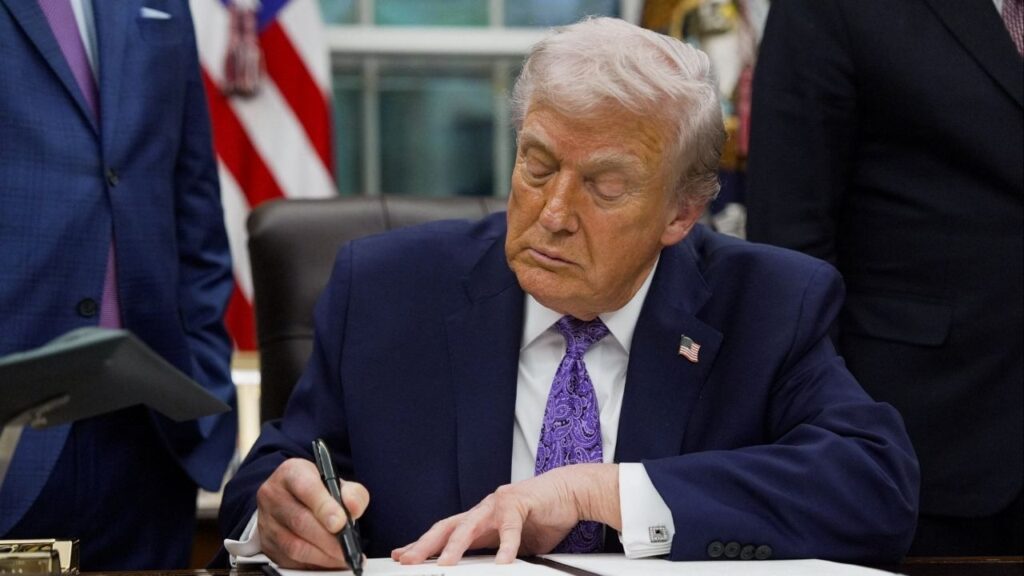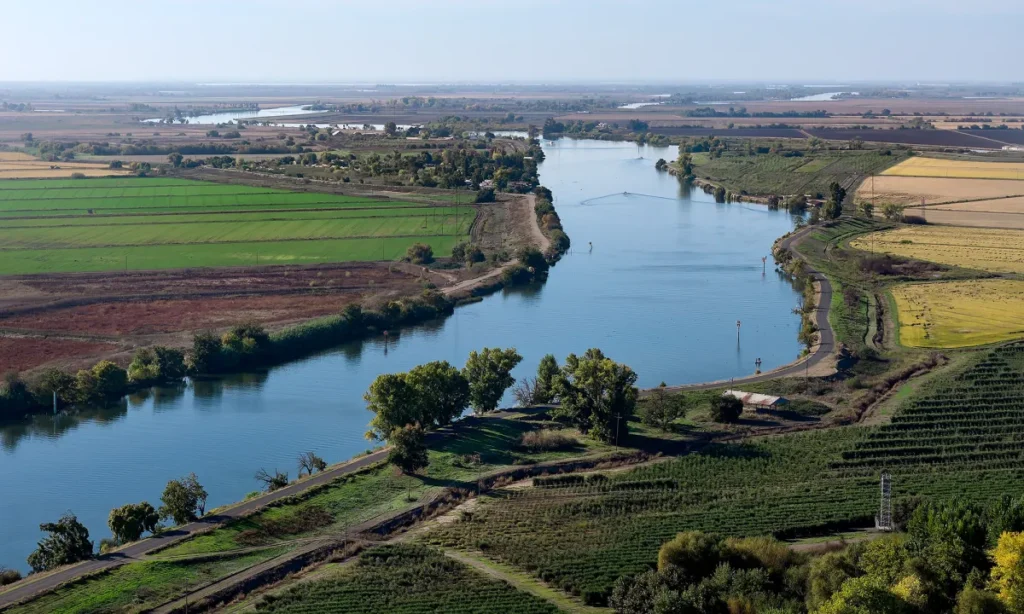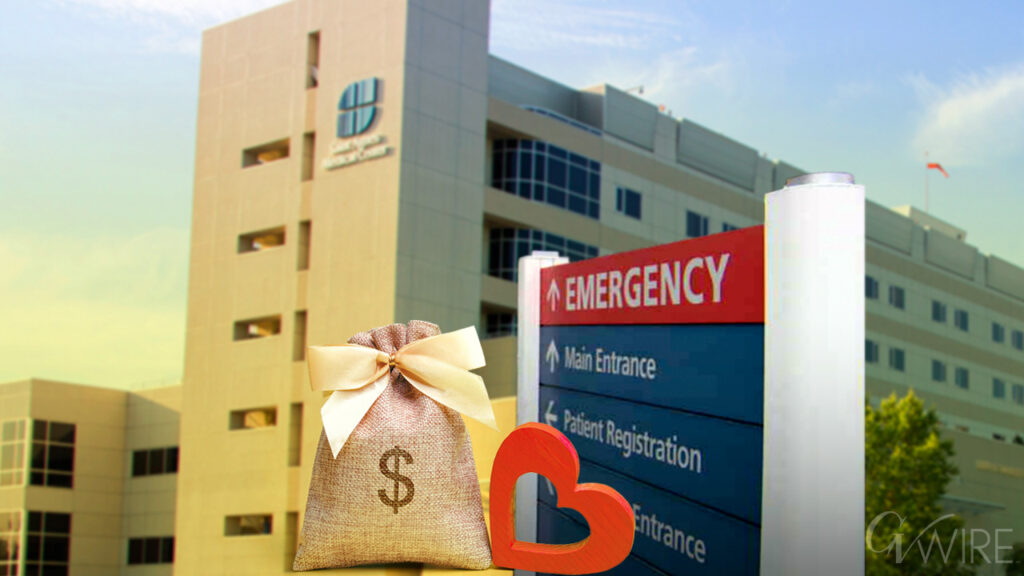Share
|
Getting your Trinity Audio player ready...
|
Business has been booming for Ziyad “Zip” Showket, a firearms instructor in liberal Marin County — thanks to six justices on the nation’s highest court.

Ben Christopher
CalMatters
For two decades across four Bay Area counties, Showket has been schooling retired law enforcement officers, mall cops, and the rare civilian allowed under local ordinances to carry a concealed handgun. The courses include live fire training; deep discussions about the legal, ethical, and psychological consequences of taking a life in self-defense; and practical concerns, such as what to do if you have to pee while armed. (Answer: Skip the urinal and “wait for a stall.”)
Up until last year, a typical class, held every other week, would bring in four or five students — eight, at most. Residents of Marin County, historically one of the toughest places in the state to get a permit, were especially rare. The most from Marin he can recall in a single class: two. “And that was, like, bizarre.”
But this was all before June 23, 2022, when the U.S. Supreme Court struck down a New York state law that gave officials sweeping discretion over who gets the right to carry a concealed firearm in public.
The ruling also wiped out California’s very similar statute, along with those in half a dozen other deep blue states. Practically overnight, county sheriffs and municipal police chiefs — the officials ultimately responsible for issuing permits — were required to begin handing them out to anyone who met basic legal requirements.
Those requirements vary slightly by county. But every California applicant must be at least 18 years old, own a registered firearm, pass a criminal background check, and complete a safety course run by a certified instructor.
Someone like Showket. Thus, his suddenly very busy schedule.
Since last summer, class sizes have swelled, forcing Showket to hire additional staff. He’s doubled his course offerings. Even so, the rest of this month is booked, along with half of April, he said.
The student body has also transformed. Classrooms once dominated by trained security professionals are now filled with engineers, salespeople, electricians, and other civilians. Once, there was a chaplain, and Showket alludes coyly to the occasional celebrity. Among the most notable changes: More residents from Marin County.
“In our last class of twelve, every single person was from Marin,” he said.
The Floodgates Open
Last year’s court decision marked the most significant undercutting of California’s strictest-in-the-nation set of gun laws in at least a generation. For gun rights advocates, the ruling has been a long-awaited reprieve.
But for many Democratic state lawmakers and Gov. Gavin Newsom, it has been cause for outrage, alarm, and calls to action. They failed to pass a bill last year to limit places where concealed guns can be carried. They’re working on a new version this session, though it wouldn’t take effect until Jan. 1 at the earliest. Senate Bill 2 is set for its first committee hearing on March 28.
Amidst the legal sea change, the tide hasn’t shifted evenly across the state.
In conservative-learning counties, sheriffs were disinclined to subject concealed carry applicants to added restrictions even before 2022. In the national divide between “may issue” states, where permits were issued by discretion, and “shall issue” states, where they were issued by right, gun owners in Shasta, El Dorado, and Fresno counties and other parts of rural California effectively resided in the latter.
It was in coastal, Democratic-leaning bigger cities where the right to concealed carry was rarely allowed. According to data released by the state Department of Justice last year, between 2012 and 2021, San Francisco issued a total of 11 permits to civilians. Marin was more permissive, but only slightly so, with 138 permits issued.
That’s all but certain to change.
From 2019 to 2021, the Marin County Sheriff’s Office received between 9 to 16 applications each year, according to office spokesperson Sgt. Brenton Schneider. Since the Supreme Court decision, the office has received 65. That’s probably an undercount: Inundated with applications in the late summer of 2022, the sheriff’s office stopped serving the entire county, referring municipal residents to their local police departments.
Before last June, people “knew better than to put an application in Marin,” said Showket. Nowadays, he said he opens up most classes by asking: “Who’s been waiting their whole life to do this?”
“Everybody raises their hand,” he said.
A Very Long Wait
One hundred miles to the south, in the Bay Area suburb of Morgan Hill, John Lissandrello said he’d never truly considered applying for a permit to carry around his 9mm pistol until the court decision.
Like most of the Bay Area, Santa Clara County was a difficult place for the average person to get a permit without showing special need. Lissandrello — a real estate investor who lives in a safe, “very quiet” exurb south of San José — didn’t have one. He was also distantly aware of a pay-to-play scandal in which the former sheriff was eventually convicted of corruption for abusing her discretionary authority over concealed carry permits to award them to her political donors. Last year, a similar scandal emerged in Los Angeles County.
Plus, as a self-described political conservative, Lissandrello said he lacked much faith in either county or state government. “I wasn’t about to waste my time trying to apply,” he said.
After the court handed down its opinion, he changed his mind, a decision as much about politics as safety. “We’re not a big gun family, but as an American patriot, I feel it’s my right to have that ability,” he said. “I don’t even know if I would carry it.”
Even so, he paid a fee and sent in his initial application in late January and was ready for the next steps: A criminal background check, an interview with sheriff staff, a psychological assessment and a training course of as long as 16 hours. But he said he never heard back.
Lissandrello is not the only applicant waiting in Santa Clara County. Michael Palmaffy applied for a permit on June 25, just two days after the court’s ruling. When he followed up three months later, he was told that the office was “in the process of implementing a software programming system to process and streamline applications,” according to an email exchange he shared with CalMatters.
Sgt. Michael Low, a Santa Clara sheriff’s spokesperson, confirmed that in February the office began using Permitium, a public records processing service that law enforcement agencies across the state have turned to to process concealed carry weapon applications.
Palmaffy said he was recently told to reapply through the new system. In the meantime, said Low, the office still faces “an extensive backlog of applications.”
According to a list of applications provided to CalMatters, it’s easy to see why. Between 2014 and June 22, 2022 — the day before the opinion — the Santa Clara sheriff’s office received a total of just 109 applications.
In the two weeks that followed, it got 132.
At least 450 more have poured in through the end of mid-February. (An additional 202 did not have dates, and the sheriff’s office did not provide an explanation for the omission.)
Other coastal counties have seen similar spikes in interest. In Santa Barbara County, the sheriff’s department approved 56 permit applications last year compared to just five the year before, according to a spokesperson. In Contra Costa County, the application rate has increased by 10-fold in the months following the decision. As of late last year, the county was sitting on a backlog of “over 1,000 applications,” according to a press release. San Francisco went from receiving one or two applications per year to nearly 100 since last June.
For now, at least, the overwhelmed agencies have received a surprisingly sympathetic ear from Chuck Michel. The president of the California Rifle & Pistol Association, the state’s National Rifle Association chapter, Michel is also a lawyer who regularly challenges the state’s restrictive gun regulations. But he cuts some slack to law enforcement officials who lack much experience with the permits.
“I’m trying to be understanding,” he said. “Imagine suddenly the DMV had a million more people showing up to renew their license.”
“By and large they’re doing what they need to do. There’s not a lot of policy resistance that I can put my finger on.”
Still, he and his legal team are waiting for this wave of applications to be processed, to see who gets denied and for what reason. That will be “the next fight,” he said.
More Guns, More Violence?
The debate over whether more civilians should be allowed to carry guns in public often plays out with both sides claiming to speak for the interest of public safety.
Gun rights advocates often argue that those with concealed carry permits — disproportionately former law enforcement officers and prosecutors, all subject to background checks — are less likely than the average person to break the law. Supporters of more restrictions on firearms argue that putting more guns in more hands invariably leads to more violence.
Research suggests that both arguments are likely correct.
A public health study looking at Texas crime statistics found that concealed carry permit holders were significantly less likely to be convicted of a crime than the general population. But the study had an important caveat: Permit holders were actually more likely to be convicted of some specific crimes such as murder and manslaughter.
Research led by Stanford economist John Donohue has found that when states have put less restrictive “shall issue” permitting laws in place, violent crime have tended to increase by roughly 9%.
That isn’t primarily driven by trigger-happy license holders, according to Donohue and his fellow researchers. Instead, more guns on the street result in more guns being stolen, which in turn leads to more violent crime.
The increases in crime he saw in the data “were bigger than seemed likely to be caused just by ‘the good guys with the guns,’” said Donohue. “And then I started to realize: Wow, the good guys are arming the bad guys by getting their guns lost and stolen.”
Another explanation he identified for the increase in violence: More armed civilians leads to less effective policing.
“Gun carrying is like putting a tax on police,” Donohue said. “It’s just complicating their jobs, making them more cautious.”
More guns in more hands may also make them more likely to draw their own firearms. Other research has found that looser concealed carry laws are associated with more “officer-involved shootings.”
Rosanna Smart, co-leader of the RAND Corp.’s Gun Policy in America initiative, which assesses research on the effectiveness of different gun laws, said it’s unclear how the sudden change in law will affect California specifically. In the past when states have loosened their concealed carry laws, they’ve done so by choice. California’s restrictions are being cracked open by judicial fiat. That could lead to different and unexpected outcomes.
But the bulk of the research points to the same general conclusion, she said: “I do think there’s fairly strong evidence that more permissive concealed carry laws…seem to be associated with increased rates of firearm homicide and total homicide.”
Sacramento Strikes Back
As gun owners across California await a fresh opportunity to exercise a newly reasserted right, Democrats in the state Capitol are racing to put guardrails around them.
The bill authored by Democratic Sen. Anthony Portantino of Glendale and championed by Gov. Newsom and Attorney General Rob Bonta would standardize the application process across all counties and add a few more restrictions and training requirements. Most consequentially, it would also limit where Californians can carry their concealed weapons.
Among the places on the very lengthy list of gun-free zones: Government and court buildings, health care facilities, bars plus restaurants that serve alcohol, university campuses, houses of worship, parks, zoos, museums, protests and festivals, public transit and any private business that does not explicitly welcome concealed carry weapon holders with a four-by-six inch sign.
The proposal is virtually identical to a bill that failed by a single vote in the dramatic final hours of last year’s legislative session. There’s little chance of that happening again. Last year’s version was written to go into effect immediately upon the governor’s signing, rather than on the usual Jan. 1. A bill with the “urgency clause” requires two-thirds approval. Portantino’s new bill doesn’t include that language, and so only needs a simple majority in the Legislature where Democrats outnumber Republicans three-to-one.
“It’s gonna pass, no question,” he said. He argues that “science” is on his side, but he may also have public support.
According to a February survey of California voters by the Institute of Governmental Studies at UC Berkeley, 60% said imposing tighter restrictions on who can own a firearm was a more important priority than protecting gun rights, though Democrats are far more likely to hold that view.
But as written, the new restrictions pushed by Portantino won’t become law until 2024 at the earliest. And that’s assuming it isn’t held up in court.
Both New York and New Jersey have passed similar laws since the Supreme Court decision, piggybacking off an acknowledgement in the majority’s opinion that states have the right to restrict firearms in “sensitive places.” It’s not yet clear how extensive or numerous those places can be, but blue states appear intent on finding out. A federal judge has put New Jersey’s law on hold, while the Supreme Court allowed New York’s to remain in place, but both rulings are temporary.
Michel with the California Rifle & Pistol Association said California lawmakers can count on a legal challenge once the bill becomes law. And unlike concealed carry weapon license applicants across the state, they won’t have to wait.
“The day that is signed we’ll be in court,” he said.
About the Author
Ben covers California politics and elections. Prior to that, he was a contributing writer for CalMatters reporting on the state’s economy and budget. Based out of the San Francisco Bay Area, he has written for San Francisco magazine, California magazine, the San Francisco Chronicle, and Priceonomics. Ben also has a past life as an aspiring beancounter: He has worked as a summer associate at the Congressional Budget Office and has a Master’s in Public Policy from the University of California, Berkeley.
About CalMatters
CalMatters is a nonprofit, nonpartisan newsroom committed to explaining California policy and politics.
RELATED TOPICS:
Categories

Trump Signs Order Aimed at Curbing State AI Laws


















